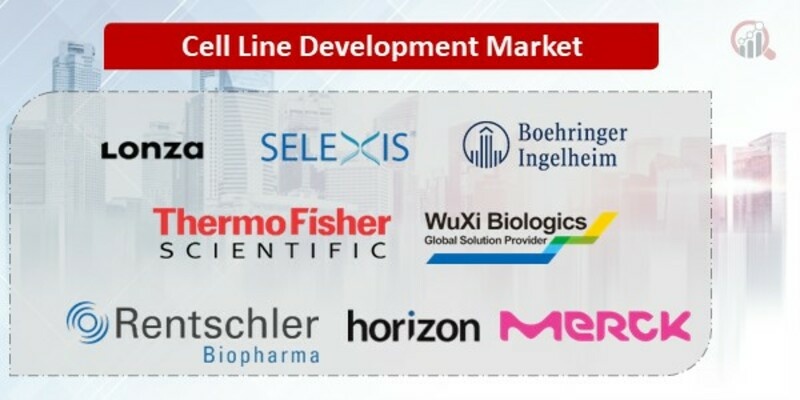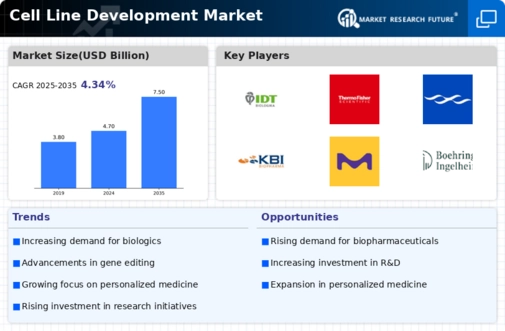Top Industry Leaders in the Cell Line Development Market
 Cell Line Development Key Companies" width="600" height="300">*Disclaimer: List of key companies in no particular orderLatest Cell Line Development Companies Update
Cell Line Development Key Companies" width="600" height="300">*Disclaimer: List of key companies in no particular orderLatest Cell Line Development Companies Update
-
May 2023: To speed up innovation and growth for its international biopharma customers, JSR Life Sciences declared that KBI Biopharma, Inc. (KBI) and Selexis SA would merge into a single entity named KBI Biopharma. Integrated, seamless options for customers, from cell line creation through process development to clinical and commercial cGMP production services for mammalian programs, will be made possible by the new structure, claims JSR. The more flexible, efficient, and streamlined operational model helps customers accelerate medication development and manufacturing while streamlining the partner experience. KBI Biopharma and Selexis have combined their strengths and knowledge to lower manufacturing risks for clients. As a key component of the whole JSR, the united entity will use the aggregate knowledge, scientific skill, and technological prowess of KBI.
-
June 2023: Lonza disclosed that it had acquired Synaffix, a biotechnology firm based in the Netherlands with an antibody drug conjugate (ADC) technology foundation. According to the agreement, Lonza will make a cash upfront payment of €100 million and up to an extra €60 million in performance-based compensation. Even though Synaffix is now a part of Lonza, it will continue to operate under the Synaffix brand and expand its base of operations in Oss, the Netherlands, to be ready for future innovation and expansion. The payload and site-specific linker components of Synaffix's ADC technology platform will improve and expand Lonza's integrated ADC services, particularly Lonza's early-phase offering. The GlycoConnect, HydraSpace, and toxSYN methods, which are proprietary and potentially dramatically improve the efficacy and tolerance of ADCs, are part of the ADC technology platform.
List of Cell line development Key companies in the market
- American Type Culture Collection (ATCC) (US)
- Lonza Group AG (Switzerland)
- Thermo Fisher Scientific Inc. (US)
- GE Healthcare (US)
- Sigma-Aldrich Corporation (US)
- Selexis SA (Switzerland)
- Promega Corporation (US)
- Corning Inc. (US)
- WuXiAppTec Inc. (China)
- Sartorius AG (Germany)










